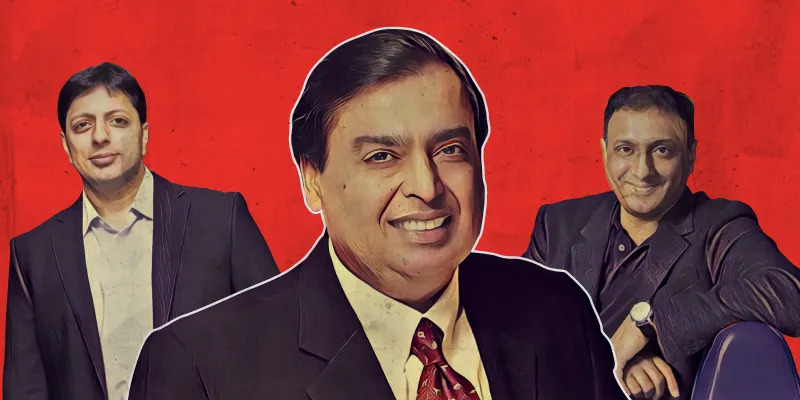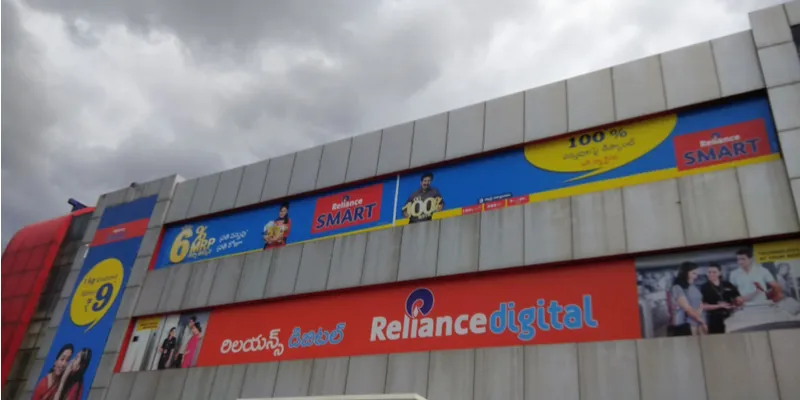Can Reliance beat Amazon and Flipkart in ecommerce? Yes and no
Following Mukesh Ambani's announcement that Reliance is entering the ecommerce marketplace space, we take a look at where it can succeed and where the challenges lie.

Last Friday, India’s richest man announced that his company, the most valuable in India with a market capitalisation of around Rs. 8 trillion, is going to take on the world’s most valued company at the latter’s game: ecommerce. Mukesh Ambani, Chairman and Managing Director of the Reliance Group, has said that the company’s “new commerce” foray will combine the group’s offline retail network of around 10,000 stores with the online reach of Reliance Jio (280 million subscribers).
So far, the ecommerce game in the country has mostly been a war between Amazon India and Walmart-owned Flipkart, with ShopClues and Snapdeal on the sidelines. Chinese giant Alibaba is also growing roots in India through Paytm. There have also been reports that Future Group was trying to enter the ecommerce race, in a joint venture with Amazon.
But, as industry observers have always maintained, the real game starts when the country’s largest conglomerates – the Reliance and TATA groups - enter the scene.
[Also read: Will the entry of Reliance as an ecommerce marketplace put profitability on the radar?]
When the veterans enter
The TATA group ventured into ecommerce in 2016 with an omnichannel experience labelled ‘phygital’ and a focus on limited categories. Customers can go through the entire process of browsing, shortlisting, purchasing products and taking delivery across online and offline channels, depending on their preference. While Flipkart and Amazon have larger warehouses and control the supply chain, TATA CLiQ’s is dis-aggregated, as their inventory resides at partner stores. By virtue of its existing business model, Reliance can do the same with its retail outlets and partner stores.
Also read: How TataCLiQ achieved what Flipkart and Amazon could not
Reliance has been biding its time for a while now. Sources in the know told YourStory that two years ago, Reliance had started a beta version of the marketplace model. Their teams in Mumbai and Bengaluru had even approached sellers and agreement/discussions were on at one point. It was supposed to be an internal project only for Reliance staff at first, before going public. However, it never took off – possibly because a profit-making business model was yet to evolve.
And let’s not forget that the Reliance group, after all, does business to make profit.
So what new can Reliance offer?
Retail expert Devangshu Dutta, Chief Executive at Third Eyesight management consultancy, says: “Reliance is known to be very aggressive in their roll-out. The ecommerce market is not closed yet. The demand is very fluid; Reliance can build scale.”
The group has the funds, and it can offer a selection as good as Amazon’s and Flipkart’s, as well as competitive pricing like any other existing player. But what will, or should, be its most unique offering?
A two-to-three-hour delivery window is an essential disruption for e-commerce industry. Although Amazon has managed it in some categories in certain areas, a well-designed hyperlocal delivery mechanism would make Reliance stand out.
Next, mainstream brands like Samsung are available in every Reliance Digital outlet. So building GMV will be easy with an omnichannel network.

It will be the private labels that are not easily available offline (like Beardo or Ustraa) that Reliance may miss out on. A seller present on Amazon and Flipkart told YourStory, “Both Amazon and Flipkart have the logistics and consumers for these products. But Reliance can still get there in time.”
One sub-category at a time?
Devangshu adds that although fashion and electronic categories can be handled easily, Reliance may have to move slowly in the grocery category despite owning the Reliance Fresh chain.
Despite BigBasket, Grofers, Amazon Now, and Flipkart Supermart taking online grocery shopping to the urban masses, the sector is infamous for its cash burn, thanks to special logistics capabilities it demands. Devangshu explains,
“FMCG is a category of high frequency but small value. Indians do not buy groceries in one large purchase for a month. We do it more in numbers than developed markets. So it will depend on their execution - whether (or not) Reliance can crack the code.”
Besides its own retail outlets, Reliance plans to tie up with lakhs of small shops that sell Jio connections to fulfil orders in small towns. But using mom-and-pop stores for pick-up and last-mile delivery demands that those inventories be made available online.
Rahul Chowdhri, Co-founder at Stellaris Venture Partners, says that this will be hard to achieve in the unorganied sector, but also points out. “Reliance can always do B2B (wholesale) business for supplying to these retailers. Grocery will have to be tackled later, though. Tomatoes sold at each Reliance Fresh store may have different quality and freshness. Instead of three-hour-delivery, it makes more sense to promise three-day-delivery.”

According to Rahul, who was earlier a Partner at Helion Venture Partners, where he invested in Shopclues and BigBasket, delivering standard items can be done through third parties like Delhivery. But an in-house system makes more sense for food and grocery delivery.
Catch 22 for Flipkart and Amazon
According to IBEF data, the Indian ecommerce industry - which was worth $39 billion in 2017 – is all to touch $120 billion in 2020, with annual growth rate of 51 percent. But now the lines between offline and online retail are fading. As Devangshu says, a physical store, a mobile phone app, and a website, are all just different interfaces. One has to pick a medium which suits the customer the best.
Reliance is entering the game at a very crucial point. Ambani made the announcement just a few days after the central government mandated strict rules for online marketplaces with foreign direct investment (FDI).
With the new government guidelines, no marketplace can have exclusive deals with brands, something that played a key role in the success of both Flipkart and Amazon.
The same set of guidelines have put the two ecommerce leaders in a predicament – they cannot own or keep inventory, nor can they influence pricing to give discounts or cash back offers. (This doesn’t apply to Reliance, given that it is an Indian company.)
Remodeling its business will take more time and effort for both parties. However, this is only a hit to Flipkart and Amazon. With Walmart taking over Flipkart and Amazon continuing to pump in billions into its India operations, overtaking them will not be an easy task.
After all, Flipkart took ecommerce to the masses in India by introducing cash on delivery long ago; Amazon started delivering via mom-and-pop stores before Reliance dared to take this step; their innovations were second to none.
Further, Reliance too will miss out on the online-only brands also. However, the latest regulatory changes prevent any marketplace from having exclusive deals with brands. How this will turn out is yet to be seen.
Now, it also is an open secret that Reliance has great political clout in India. So when Ambani complains about ‘data colonisation’ and the need to encourage Indian companies more in acquiring data of Indian citizens, one cannot but wonder if there was ever a better time for Reliance to enter a sector like ecommerce.







